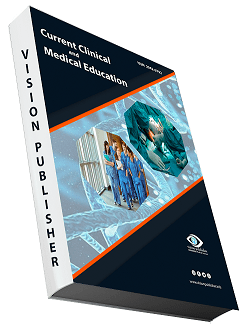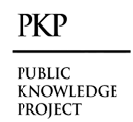Sex Hormonal Imbalance in Patients with CVD
Keywords:
Cardiovascular disease(CVD), Sex Hormonal Imbalance, PatientsAbstract
The present study was include elect a group of heart disease medicine that use to treatment people with heart diseases and the most common drugs in Heart diseases hospital (Propanolol) to study their effect on sex hormones in both sexes.The current study also included 60 patients with heart disease, including 20 males and 20 females. 20 controls 10 of each sex. The high concentration of FSH, LH, Prolactin Estradiol, and Progesterone were detected in male of patients and increased significantly, in contrast the lowa concentrations were detected in male of control, also a significant differences were recorded between patients groups and control groups, with except Estradiol not sign difference between patients and between control according to gender. While Testosterone concentration decreased in male of control, and increased significantly in female of patients. The hematological parameters included in the current study were recorded. A significant difference in Hb level and HCT was detected within patients, and within control, and non-significant differences between patients and control within the same sex, the number of WBC and PLT were recorded as non significant differences within patients, within control, and between patient and group of control.
Downloads
References
Baigent, C., Blackwell, L., Collins, R., Emberson, J., Godwin, J., Peto, R., and Zanchetti, A. (2009). Aspirinin the primary and secondary prevention of vascular disease: collaborative meta-analysis of individualparticipant data from randomised trials. Lancet, 373(9678), 1849-1860.
Cecelja, M., and Chowienczyk, P. (2012). Role of arterial stiffness in cardiovascular disease. JRSMcardiovascular disease, 1(4), 1-10.
Duprez, D., and Jacobs Jr, D. R. (2012). Arterial stiffness and left ventricular diastolic function: does sexmatter?. Hypertension, 60(2), 283- 284.
D'Urzo, K. A. (2016). Does estrogen fluctuation throughout the menstrual cycle impact flow-mediateddilation during exercise in healthy premenopausal women? (Doctoral dissertation, Queen's University(Canada.))
Hayward, C.S., R.P. Kelly, and P. Collins. (2000). The roles of gender, the menopause and hormonereplacement on cardiovascular function. Cardiovascular Research. 46: p. 28-49.
Ingelsson, E. (2014). The grand challenge of cardiovascular epidemiology: turning the tide. Frontiers incardiovascular medicine, 1, 2.
James, P. A., Oparil, S., Carter, B. L., Cushman, W. C., Dennison- Himmelfarb, C., Handler, J., and Ortiz, E.(2014). 2014 evidence-based guideline for the management of high blood pressure in adults: report from thepanel members appointed to the Eighth Joint National Committee (JNC 8). Jama, 311(5), 507-520.
Kang, H., and Park, H. A. (2016). A mobile app for hypertension management based on clinical practiceguidelines: development and deployment. JMIR mHealth and uHealth, 4(1), e4966.
Kones, R. (2011). Primary prevention of coronary heart disease: integration of new data, evolving views,revised goals, and role of rosuvastatin in management. A comprehensive survey. Drug design, developmentand therapy, 5, 325.
Kotsis, V., Stabouli, S., Karafillis, I., and Nilsson, P. (2011). Early vascular aging and the role of central bloodpressure. Journal of hypertension, 29(10), 1847-1853.
Marieb, E. N., and Hoehn, K. (2007). Human anatomy and physiology. Pearson education.
Moore, K. L., and Dalley, A. F. (2018). Clinically oriented anatomy. Wolters kluwer india Pvt Ltd.
Mozaffarian, D., Benjamin, E. J., Go, A. S., Arnett, D. K., Blaha, M. J., Cushman, M., and McGuire, D. K.(2016). American heart association statistics committee; Stroke statistics subcommittee. Heart disease andstroke statistics-2016 update: a report from the American Heart Association. Circulation, 133(4), e38-e60.
Narkiewicz, K., Kjeldsen, S. E., and Hedner, T. (2006). Hypertension and cardiovascular disease in women:Progress towards better understanding of gender-specific differences?. Blood pressure, 15(2), 68- 70.
Nilsson, P. M. (2014). Hemodynamic aging as the consequence of structural changes associated with earlyvascular aging (EVA). Aging and disease, 5(2), 109.
Ouyang, P., Wenger, N. K., Taylor, D., Rich-Edwards, J. W., Steiner, M., Shaw, L. J., Berga, S. L., Miller, V.M. and Merz, N. B. (2016). Strategies and methods to study female-specific cardiovascular health and disease:A guide for clinical scientists. Biology of Sex Differences, 1 - 24
Park, S., and Lakatta, E. G. (2012). Role of inflammation in the pathogenesis of arterial stiffness. Yonseimedical journal, 53(2), 258-261.
Pérez-López, F. R., Chedraui, P., Gilbert, J. J., and Pérez-Roncero, G. (2009). Cardiovascular risk inmenopausal women and prevalent related co-morbid conditions: facing the post-Women's Health Initiativeera. Fertility and sterility, 92(4), 1171-1186.
Pierdominici, M., Ortona, E., Franconi, F., Caprio, M., Straface, E., and Malorni, W. (2011). Gender specificaspects of cell death in the cardiovascular system. Current pharmaceutical design, 17(11), 1046- 1055.
Qu, M., Feng, C., Wang, X., Gu, Y., Shang, X., Zhou, Y., Xiong, C. and Li, H. (2021). Association of serumtestosterone and luteinizing hormone with blood pressure and risk of cardiovascular disease in middle-agedand elderly men. Journal of the American Heart Association, 10(7), 1-11.
Roger, V. L. (2012). Go AS Lloyd-Jones DM Benjamin EJ Berry JD Borden WB Bravata DM Dai S Ford ESFox CS Fullerton HJ Gillespie C Hailpern SM Heit JA Howard VJ Kissela BM Kittner SJ Lackland DTLichtman JH Lisabeth LD Makuc DM Marcus GM Marelli A Matchar DB Moy CS Mozaffarian D MussolinoME Nichol G Paynter NP Soliman EZ Sorlie PD Sotoodehnia N Turan TN Virani SS Wong ND Woo DTurner MB. Heart disease and stroke statistics-2012 update: a report from the American Heart AssociationCirculation, 125, e2.
Rossi, P., Francès, Y., Kingwell, B. A., and Ahimastos, A. A. (2011.)Gender differences in artery wallbiomechanical properties throughout life. Journal of hypertension, 29(6), 1023-1033. 7.
Roth, G. A., Abate, D., Abate, K. H., Abay, S. M., Abbafati, C., Abbasi, N., and Borschmann, R. (2018).Global, regional, and national age-sex- specific mortality for 282 causes of death in 195 countries andterritories, 1980-2017: a systematic analysis for the Global Burden of Disease Study 2017. The Lancet,392(10159), 1736-1788.
Schmid, A. A., Arnold, S. E., Jones, V. A., Ritter, M. J., Sapp, S. A., and Van Puymbroeck, M. (2015). Fearof falling in people with chronic stroke. American Journal 6903350020p1-6903350020p5. of OccupationalTherapy, 69(3)
Van Varik, B., Rennenberg, R., Reutelingsperger, C., Kroon, A., de Leeuw, P., and Schurgers, L. J. (2012).Mechanisms of arterial remodeling: lessons from genetic diseases. Frontiers in genetics, 3, 290.
Virmani, R., Burke, A. P., Farb, A., and Kolodgie, F. D. (2006). Pathology of the vulnerable plaque. Journalof the American College of Cardiology, 47(8S), C13-C18.
World Health Organization. (2019). Suicide in the world: global health estimates (No.WHO/MSD/MER/19.3). World Health Organization.
Yusuf, S., Hawken, S., Õunpuu, S., Dans, T., Avezum, A., Lanas, F., and Interheart Study Investigators.(2004). Effect of potentially modifiable risk factors associated with myocardial infarction in 52 countries (theINTERHEART study): case-control study. The lancet, 364(9438), 937-952.

Downloads
Published
How to Cite
Issue
Section
License

This work is licensed under a Creative Commons Attribution 4.0 International License.
Current Clinical and Medical Education













